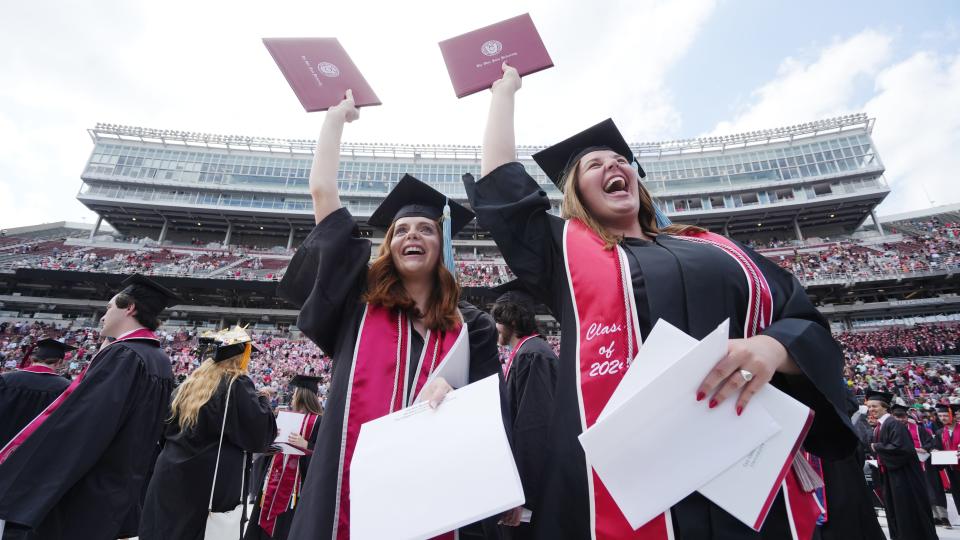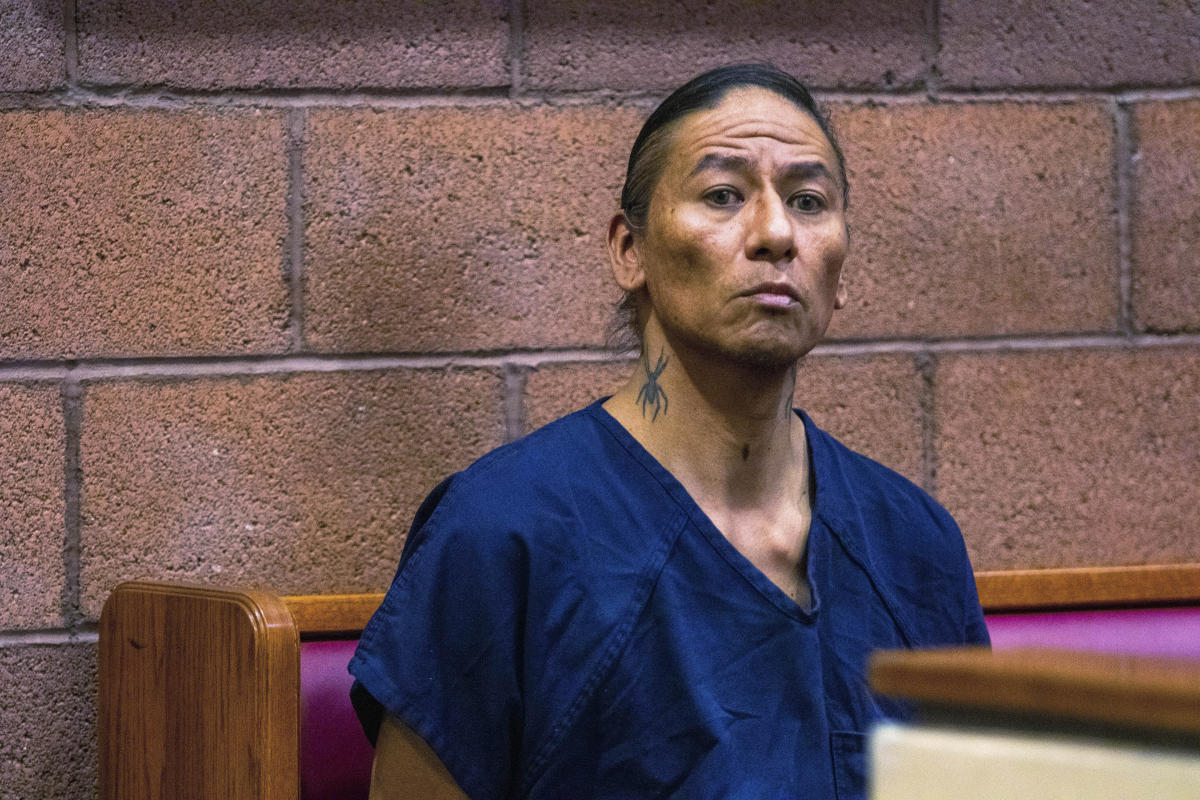Jun. 8—It’s called Scooby.
It’s made up of two parts, each equipped with a flying saucer-shaped head of machinery, four microphones and a wooden base.
Together, Scooby’s two halves and eight microphones can detect the source of a loud noise — like a popping balloon — to within a one-foot radius.
For the past year or so, students at Capital High School have been working on the device — constructing its body and tweaking its code — with the help of computer science teacher Barbara Teterycz and mentor David Ritter, who spent 30 years in the Silicon Valley tech world before moving to Santa Fe.
But Scooby’s true purpose isn’t to detect popping balloons.
It’s intended to detect gunshots in hopes of quickly identifying the location of the perpetrator during an active shooting — particularly a school shooting.
Though they brought home a flock of science and engineering awards throughout the 2023-24 school year, five of the seven Capital High students behind Scooby will continue their work in an at-school computer science internship this summer, with plans to expand the technology into a network that covers an entire campus.
In its current form, Scooby is a “huge proof of concept,” said Raul Alvarado, a rising sophomore in the computer science club — and it could be the next big gadget in school security. But the team also hopes to make a statement about the daily fear of attending school in the era of rampant school shootings.
“If we can make any sort of impact — like at least get some sort of awareness toward how big of an issue it actually is — that’s enough,” said Haize Christiansen, another club member.
A few years ago, Ritter served as a judge in a local science fair. There, he said, he saw a discrepancy in opportunity between students living on Santa Fe’s more affluent east side and those on the city’s poorer south side.
The experience led Ritter to a clear conclusion: “The kids at this end of town needed to have more opportunity.”
So he connected with Teterycz, volunteering to serve as a mentor for her computer science club projects.
First, Ritter and his team worked on Snoopy, a device that measures air quality. Then, in the aftermath of the Hermits Peak/Calf Canyon Fire in 2022, they adapted Snoopy into an air quality and fire detection system, called Smokey.
(Yes, all of the teams’ projects borrowed their names from cartoon animals — the beagle, the bear, and well, the Doo.)
A news story pushed Ritter toward the initial concept for Scooby.
It was May 2023 — almost exactly one year after the devastating shooting at Robb Elementary School in Uvalde, Texas, when a gunman killed 19 fourth graders and two teachers.
“The first thing that happens in one of these school shootings is: Lots of noise, nobody knows what it is, nobody knows where [it’s] coming from,” Ritter said. “This is solvable with technology.”
The students jumped at the idea. Edward Scott, a soon-to-be senior at Capital and another computer science club member, said he became interested in developing a gunshot detection system because the Uvalde shooting felt close to home in New Mexico’s neighboring state.
“It’s not that far; it was in Texas,” Scott said. “That fear is like, in you. You never know when the shooter’s going to come into your school.”
So the team got to work, designing Scooby’s microphones to pick up loud noises and writing code to pinpoint the noises’ origins to a single spot. They tested the technology by popping balloons and packing pillows.
Soon enough, the students started securing awards for their work in a contest sponsored by Samsung, statewide STEM and supercomputing challenges and the Congressional App Challenge.
Presenting the project in front of groups of judges was an exercise in self-confidence.
“It made me step out of my comfort zone and be really out there,” said Craig Andree Abajo, another student on the team.
This summer, Capital High’s computer science club will continue its work in an internship on school grounds.
“My words can’t express how happy I am for our students,” Teterycz wrote in an email. “Many of them wouldn’t have a ride to other internship opportunities that are too far from their home, so having such an internship here, at their own school is a real blessing.”
The students are planning to continue updating Scooby’s hardware and software, Alvarado said. Eventually, the plan is to create a network of marketable Scoobys that could attach to the ceiling throughout a school and locate gunshots anywhere on campus.
Perhaps, Alvarado added, the team could attract a company or organization interested in making a similar product — something that detects gunshots and protects schools.
For Ritter, though, sparking the students’ interest in computer science is the best place to start.
“If they see the possibilities of them getting into technical work because they tried this and actually were successful, I think that’s really what it’s about,” he said.
That mission has been resoundingly accomplished: All of the club participants said they’re planning to pursue a career in computer science or electrical engineering.
“I found something that I think I really love doing,” Scott said.
Signup bonus from





